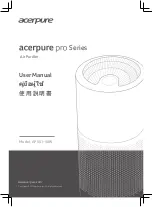
36
7-5. Wiring Instructions
7-5-1. General Precautions on Wiring
(6) Unauthorized changes in the internal wiring can
be very dangerous. The manufacturer will accept
no responsibility for any damage or misoperation
that occurs as a result of such unauthorized
changes.
(5) Do not allow wiring to touch the refrigerant tubing,
compressor, or any moving parts of the fan.
(4) Each wiring connection must be done tightly and in
accordance with the wiring system diagram. Wrong
wiring may cause the unit to misoperate or become
damaged.
(3) To prevent possible hazard due to insulation fail-
ure, the unit must be grounded.
(2) Provide a power outlet to be used exclusively for
each unit, with a power supply disconnect and cir-
cuit breaker for overcurrent protection provided in
the exclusive line.
(1) Before wiring, confirm the rated voltage of the unit
as shown on its nameplate, then carry out the
wiring closely following the wiring diagram.
(4) Disconnect the manifold gauge and the inter-unit
tubes, and attach the caps and flare nuts. At this
point, pump-down is completed. (If the caps and
flare nuts are not reattached, there is the danger
of gas leakage.) (Refer to Fig. 25.)
(3) Perform cooling operation or forced cooling
operation.
When the pressure at the low-pressure side is
0.15– 0.2 MPa (0.5– 1 kg/cm
2
G), fully close the
spindles at the valves on the wide tube of the
indoor unit, and immediately stop operation.
(Refer to Fig. 24.)
In the winter, the outdoor unit may stop after 5 -
10 minutes of operation. This is in order to protect
the indoor unit heat exchanger from freezing and
does not indicate a problem.
If pump-down is not possible
If the A/C cannot be operated because of a malfunc-
tion or other cause, use a refrigerant recovery device
to recover the refrigerant.
Manifold gauge
Wide tube side
Fig. 24
Cap
After disconnecting
the inter-unit tubes,
attach the flare nuts
with flare bonnets.
Fig. 25
Содержание SAP-KCRV243GJ
Страница 78: ...Dalian SANYO Air Conditioner Co Ltd ...
















































